LTC Area Lights (2023.1)
We now support LTC area lights (Sphere, Disc, and Rectangular) in OpenGL and precomputed render modes to approximate the behavior of glossy reflections with less noise in the first frame of real-time presentations in the precomputed raytracing modes. OpenGL areas lights used with measured carpaint materials now look much closer to Full GI rendered results. These changes affect only area lights in OpenGL, and have no impact in the raytracing modes. And lastly, Visible in Reflections now behaves the same in OpenGL as in raytracing.
In OpenGL, area light shadows have improved, resulting in less artefacts and better shadowmap resolution. They also no longer change when adjusting the Z-axis scale of the area light.
We also added support for the following:
- Area lights with specularity when precomputed rendering in CPU and GPU raytracing.
- Non-ISO GGX materials, so brushed metal and anisotropic materials work with LTC area lights.
- Floating point textures for LTC area lights.
Glossiness
In 2023.1, the glossiness for OpenGL area lights is evaluated and provides results similar to area lights when raytraced. Before 2023.1, OpenGL area lights only displayed diffuse properties, not glossy. Therefore, there was a difference between OpenGL area lights and raytraced (which also displayed GGX BRDF glossiness).
Here is a side-by-side comparision showing before 2023.1 and now.
| Before 2023.1 | 2023.1 |
|---|---|
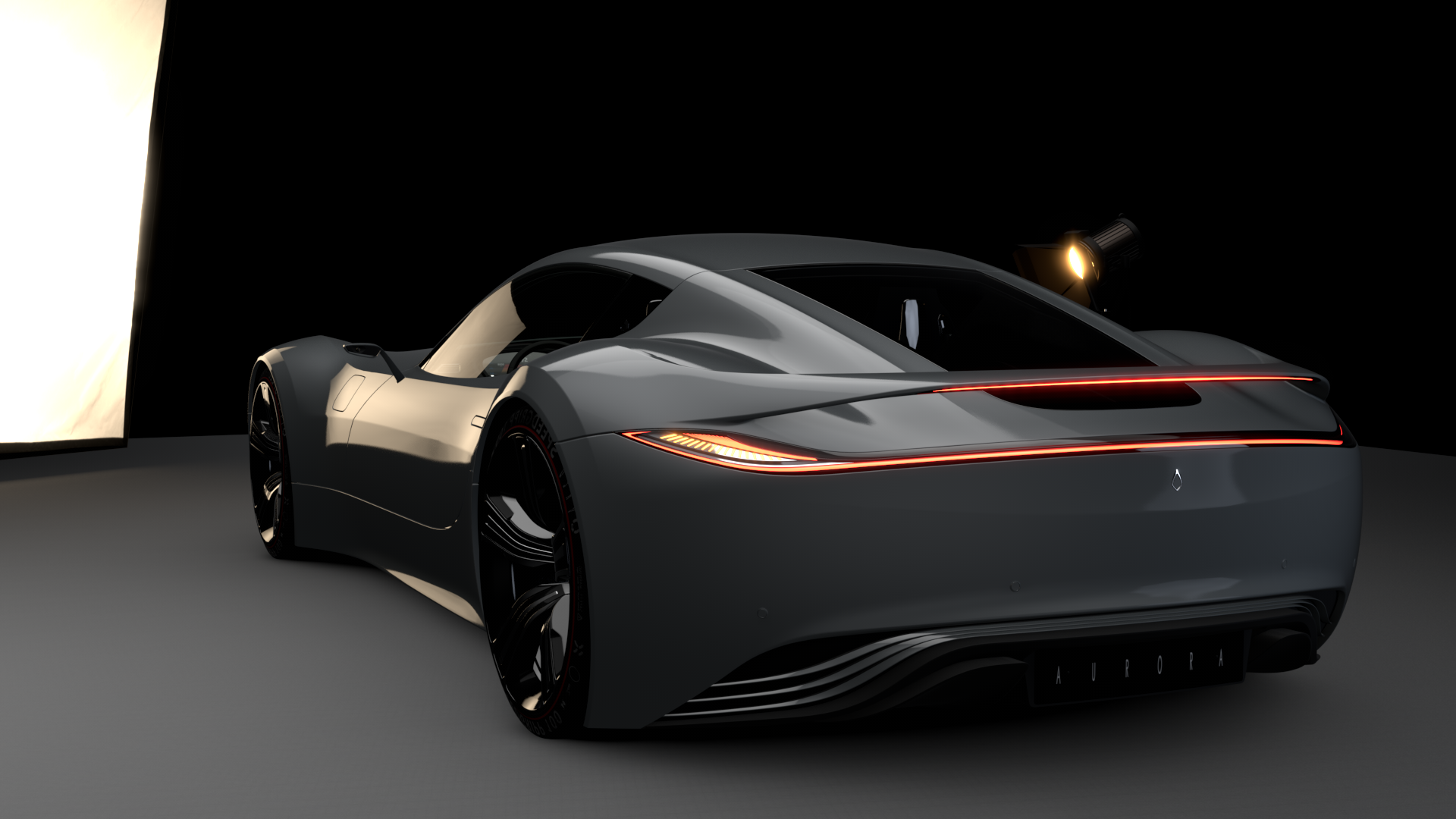 |
 |
Area Light Raytracing Quality
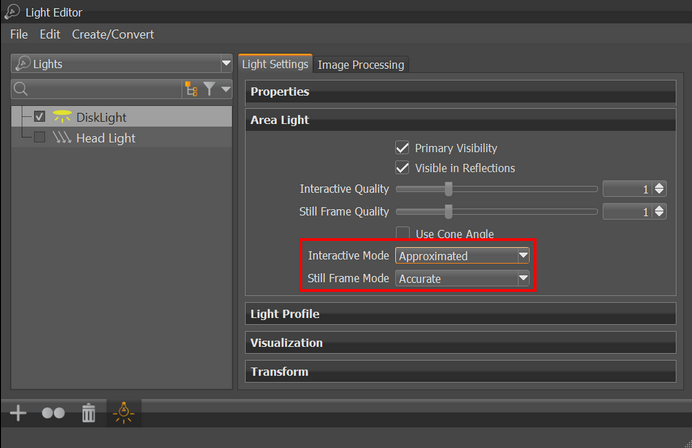
There are now two modes, interactive and still frame rendering, for setting the raytracing quality used when evaluating an area light. Choose between accurately traced and approximate, when in OpenGL. Approximate is not physical accurate, but leads to less noise than the Accurate option. The option selected will determine the calculations used.
| Interactive Accurate | Interactive Approximated |
|---|---|
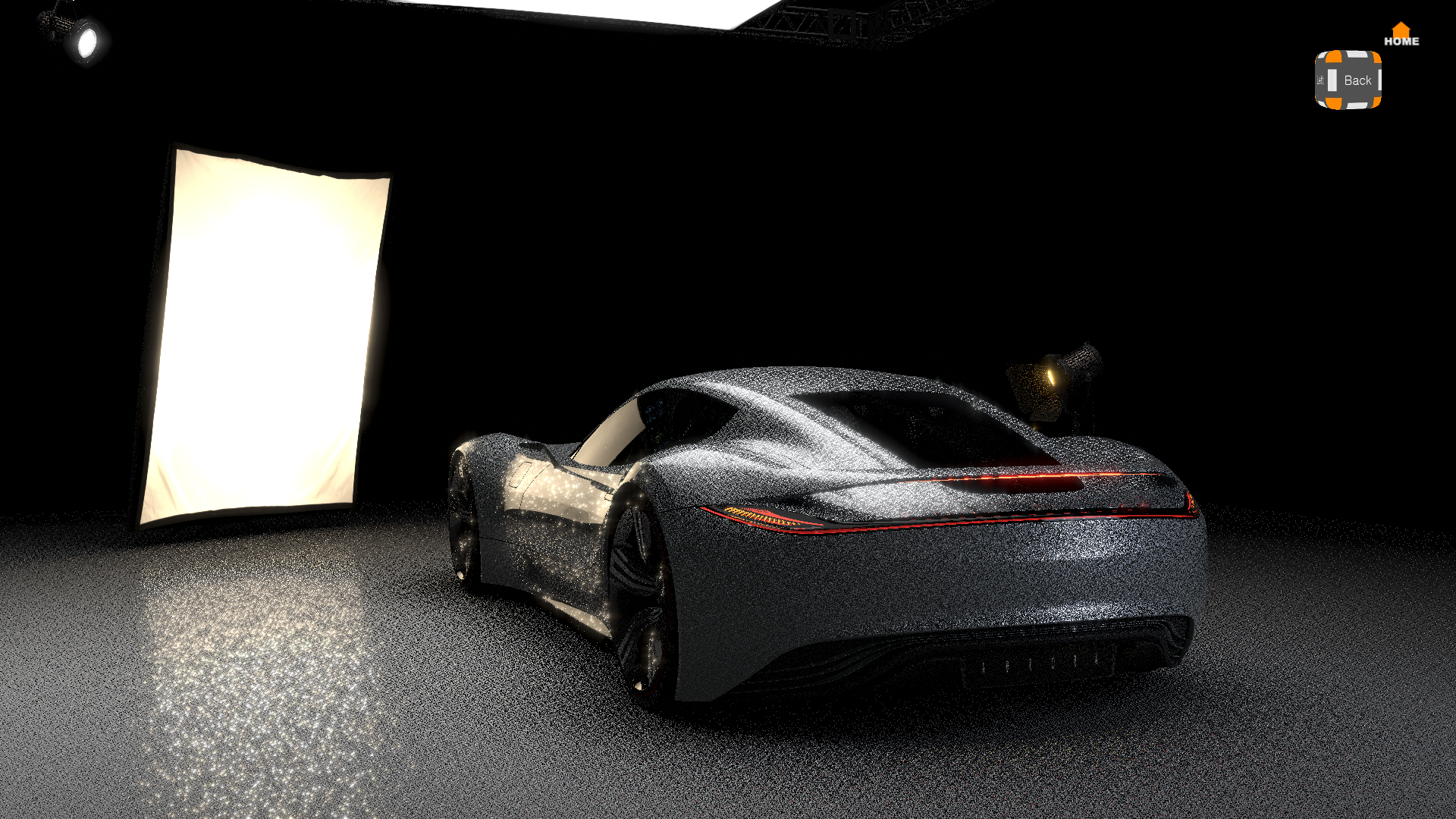 |
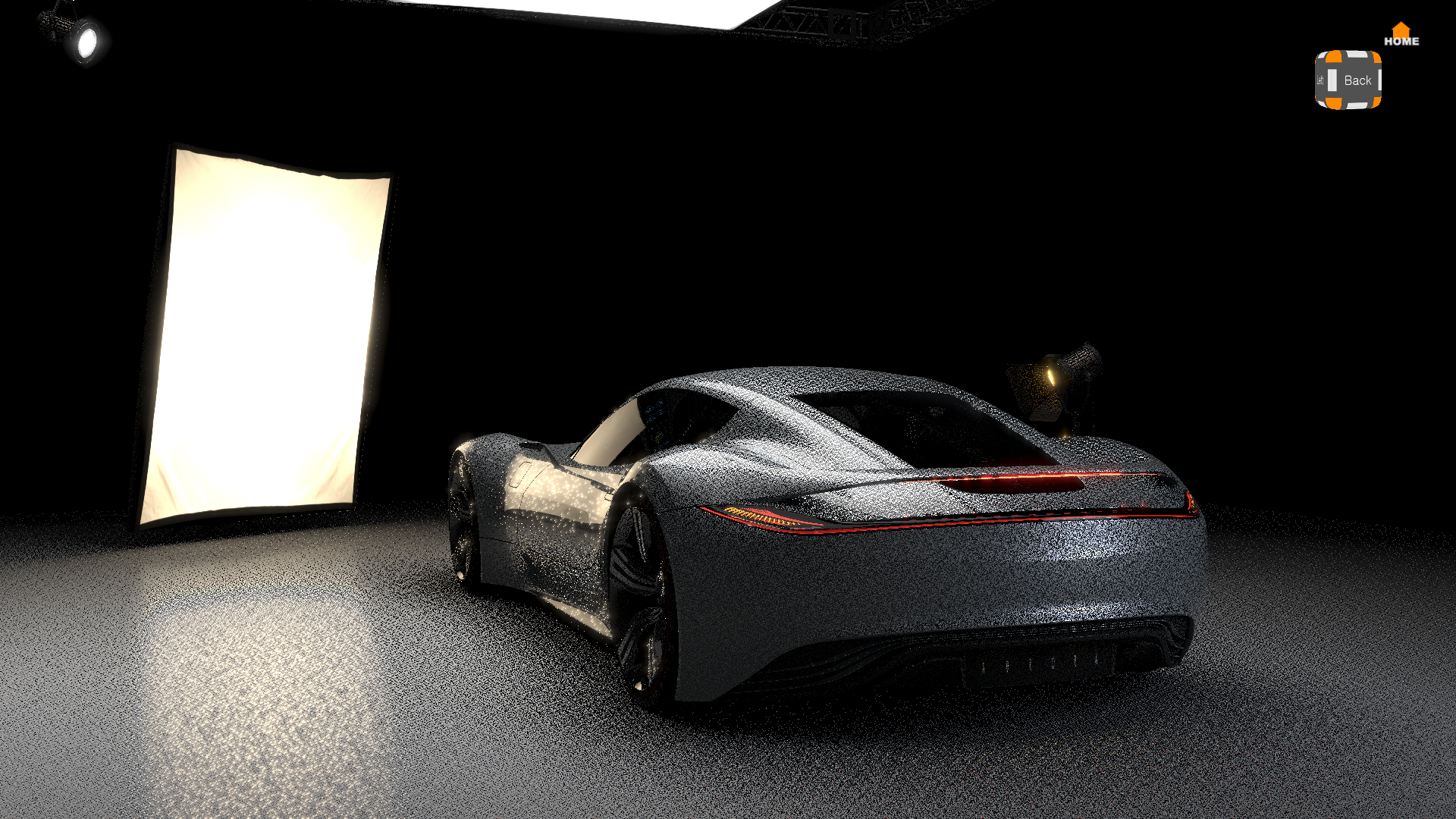 |
To reduce the noise to 0 for a good-looking real-time visualization with raytraced reflections and area lights, try using DLSS or Denoising with the approximated area light glossy reflection.
| Denoising + Interactive Approximated | DLSS + Interactive Approximated |
|---|---|
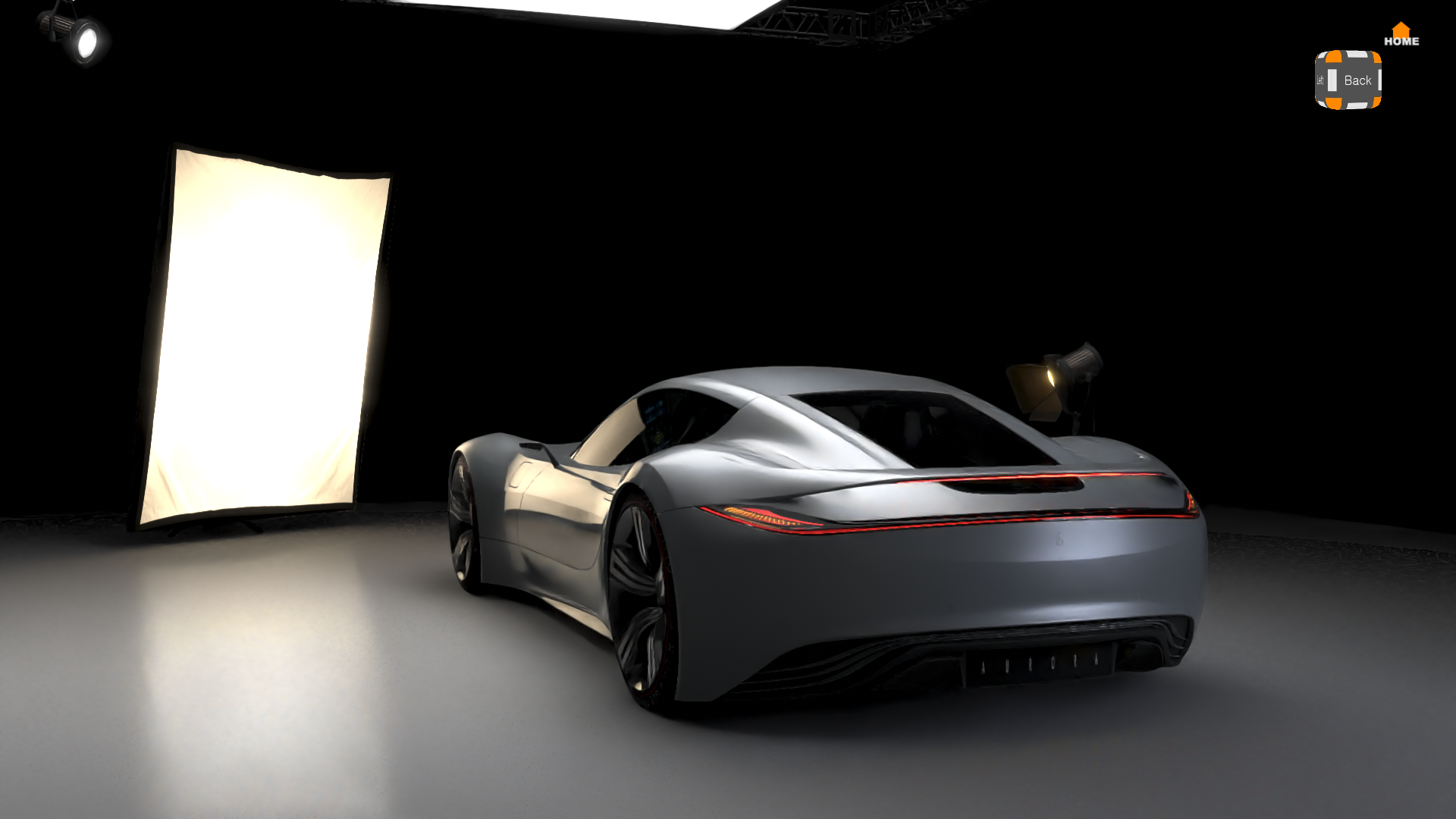 |
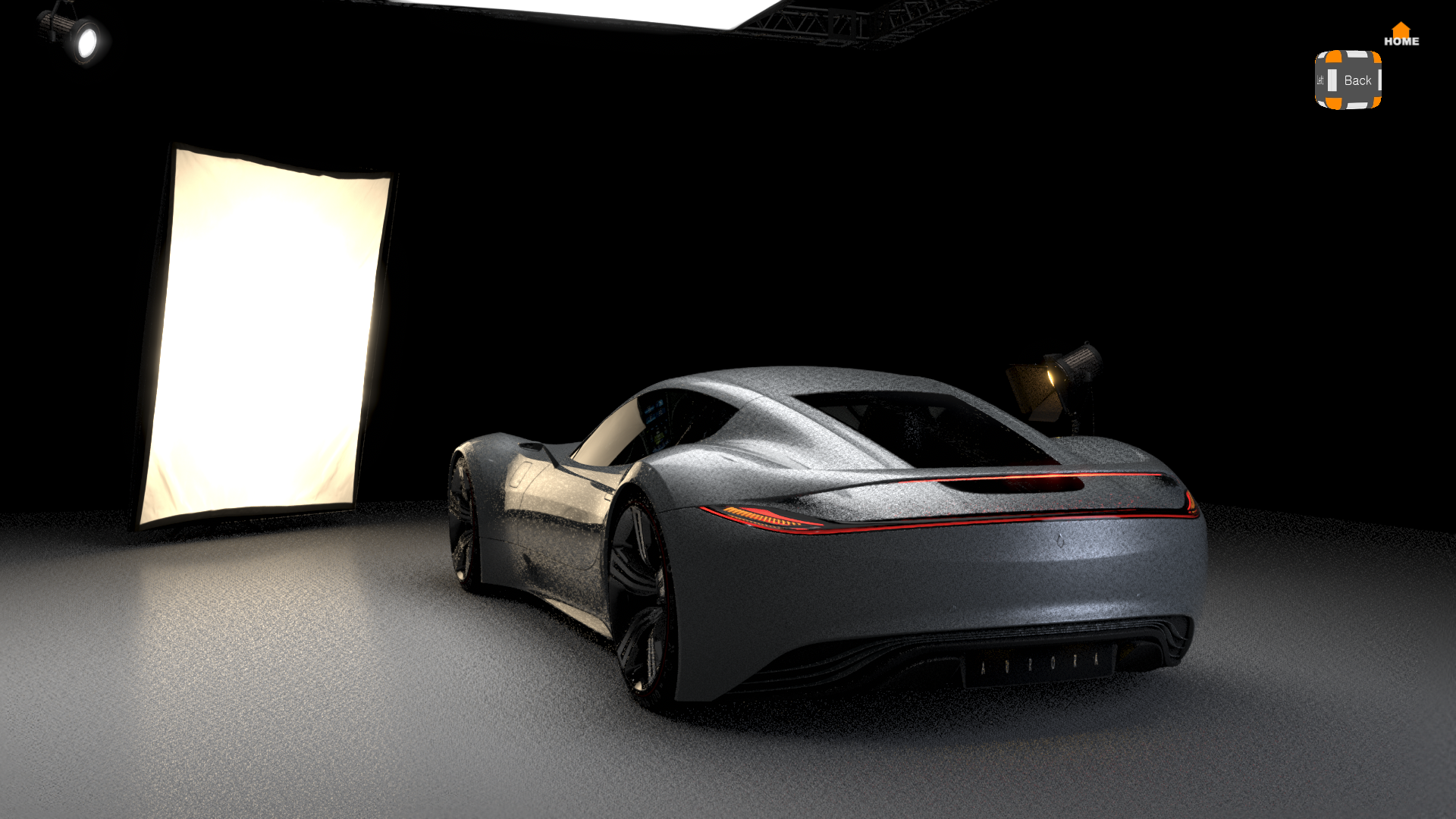 |
For both options, the noise is caused by the render mode (precomputed + Shadows) and the absence of a denoiser, DLSS, or interactive quality. Increasing any of these will reduce the noise.
Approximated is for users who want high performance in the precomputed render modes, but less noise in glossy reflections. Disable the tracing of area lights and use area light approximation in Raytracing to achieve this. For each light in the Light Editor > Light Settings tab > Area Light section, set the modes to Approximated, which takes an approximation of the light sources, based on linearly transformed cosines.
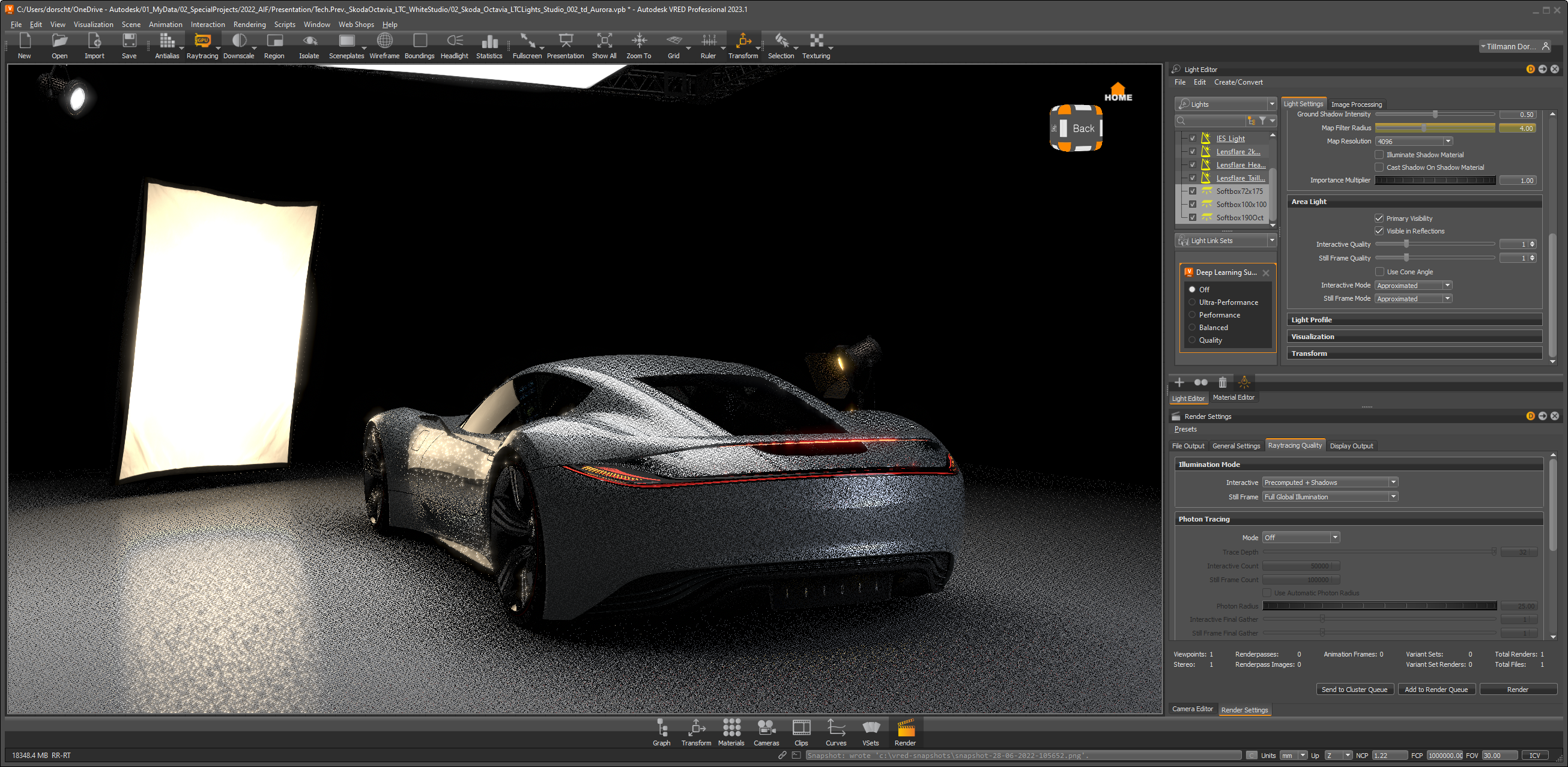
Accurate traces against those lights which give physically correct glossy reflections, when in the raytracing precomputed, precomputed + reflection, and precomputed + shadow modes; however, the first frame will have some noise. Check out the area light glossy reflection of the softbox on the floor in the following image. This option takes an accurate sampling of the light sources.
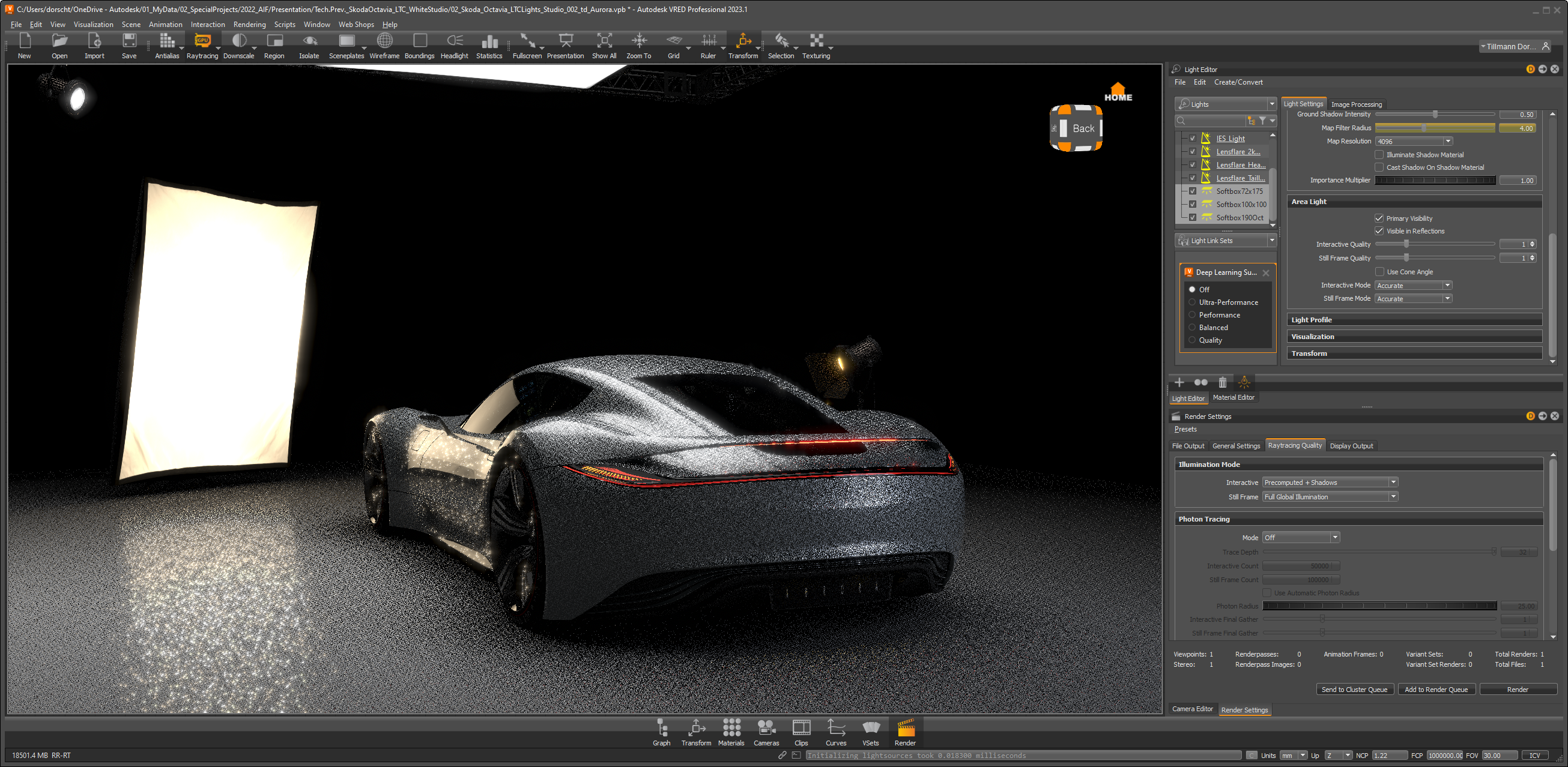
Visible in Reflections
Another improvement to OpenGL area lights concerns the Visible in Reflections option in the Light Editor > Area Light section. This option now behaves the same in OpenGL as in raytracing. To turn off the reflection of an area light for highly reflective materials in a scene, disable Visible in Reflections. This toggles off the reflection, providing only the shape of the area light.
Here is a side-by-side comparision showing before 2023.1 and now.
| Before 2023.1 | 2023.1 |
|---|---|
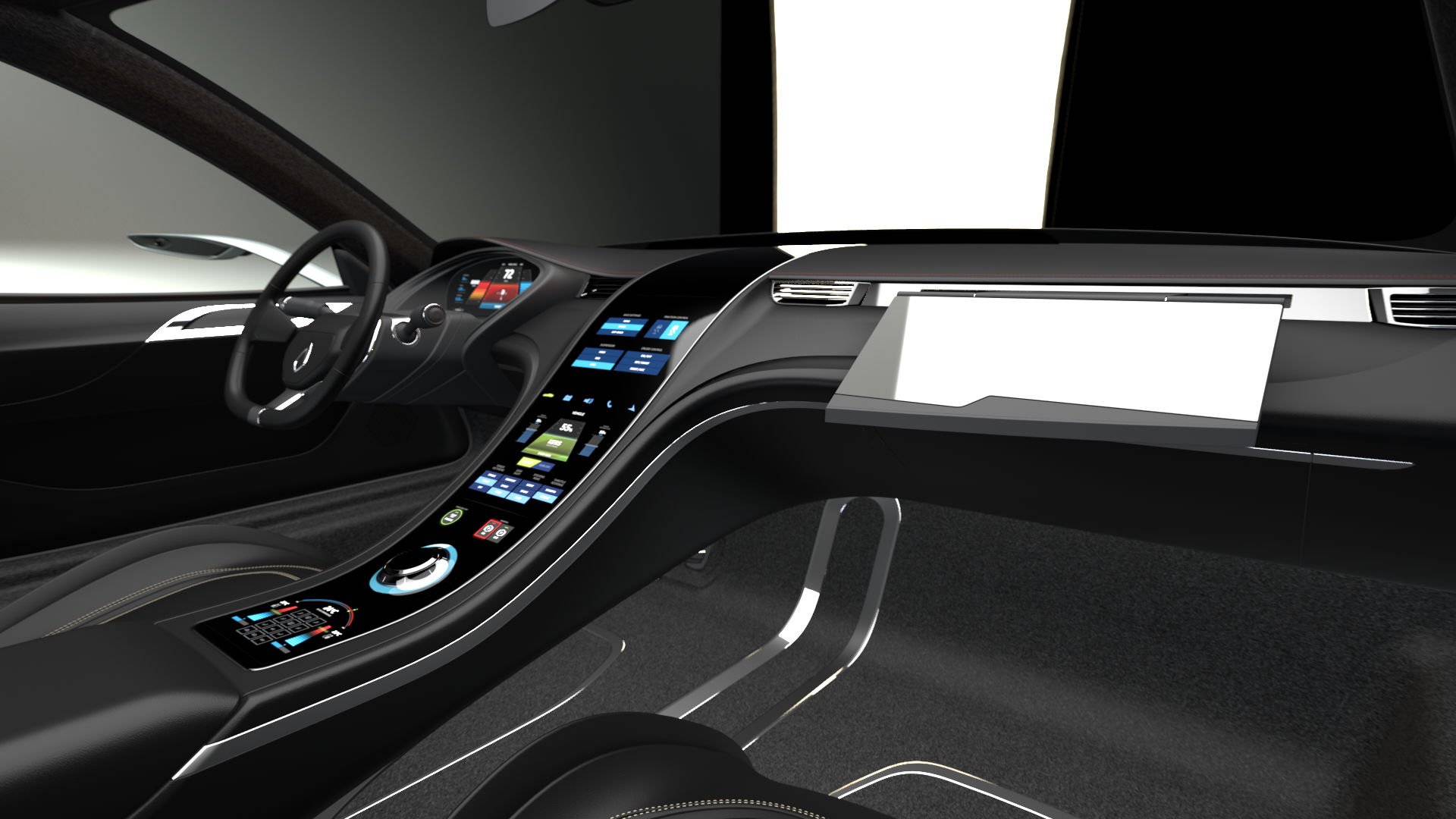 |
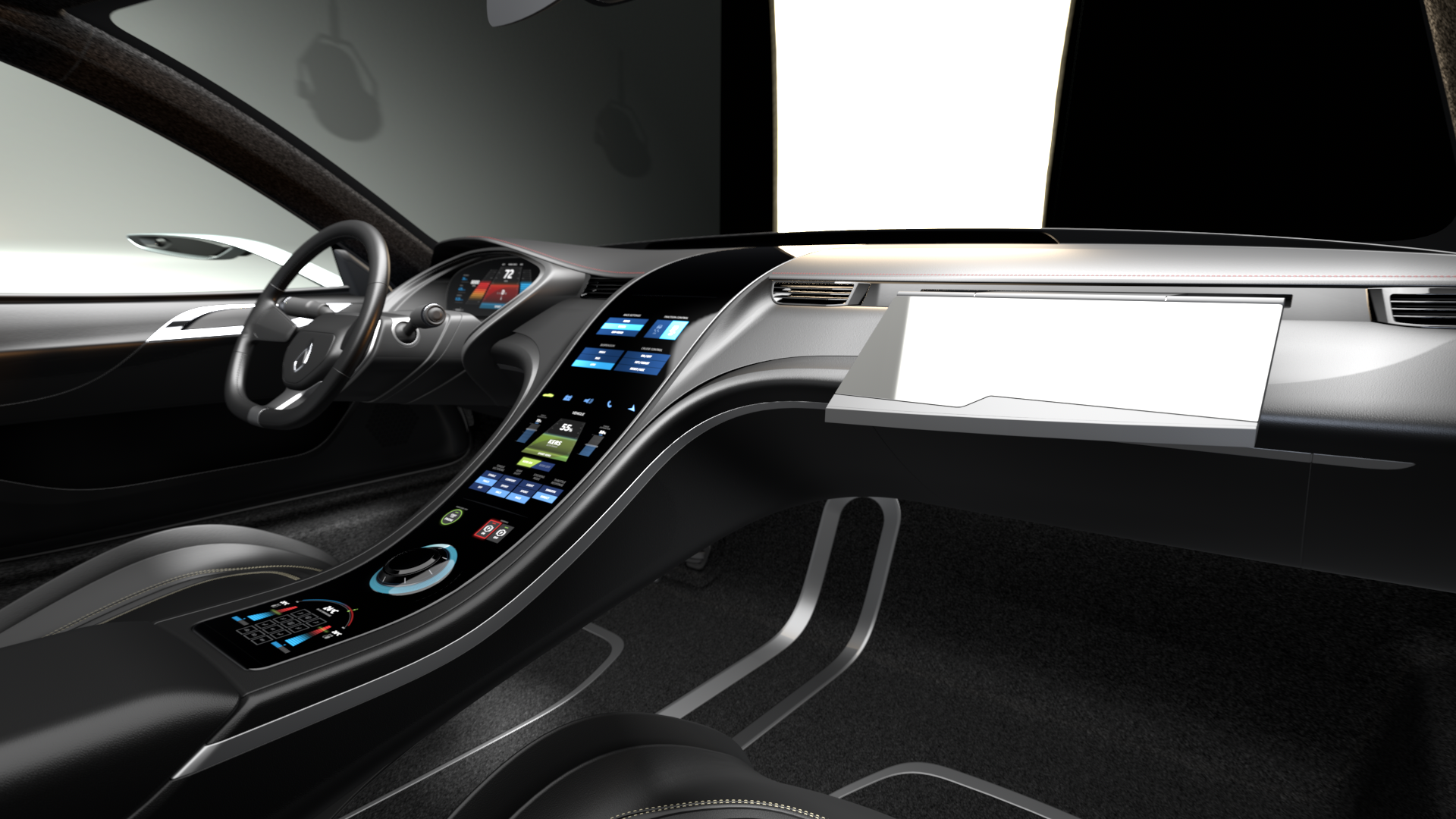 |
The more area lights there are in a scene, the lower your machine's performance.